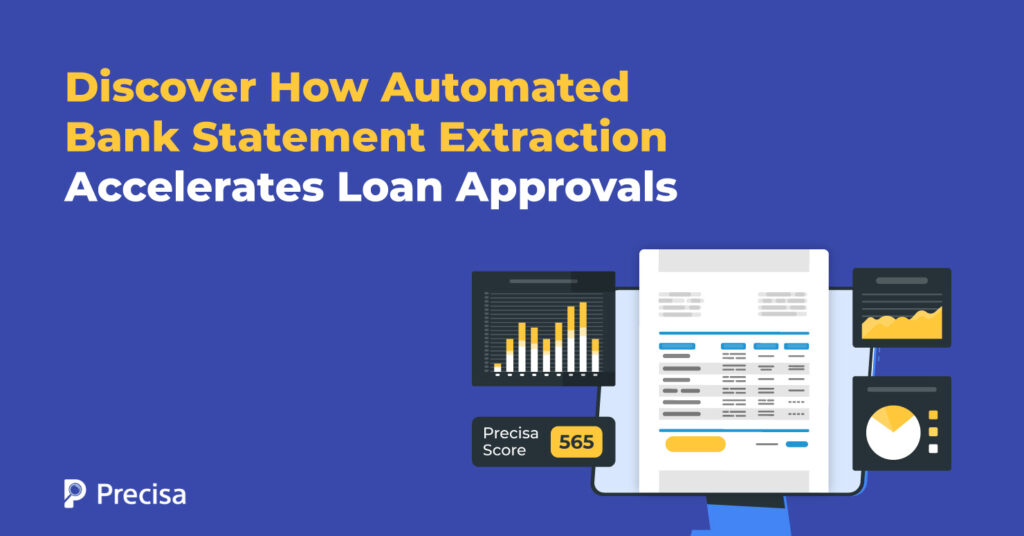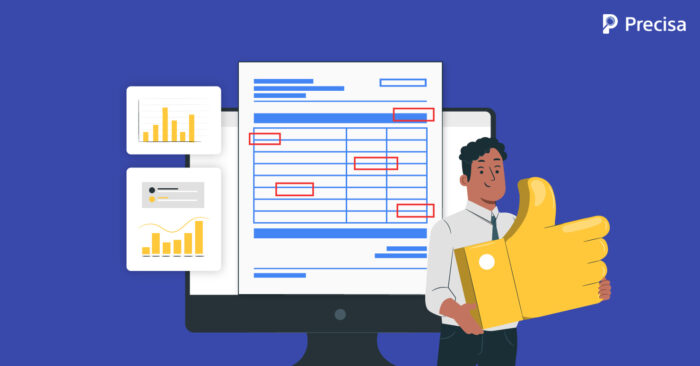How Automated Bank Statement Extraction Accelerates Loan Approvals

Latest reports suggest that around 67% of Indians have applied for a personal loan at some point in their lives. Furthermore, India’s consumer borrowings have surged in recent years as more people fulfil their aspirations, including travel, buying a new car, building a house, and more.
As a result, traditional and non-traditional lenders, including banks, non-banking financial corporations (NBFCs), micro-finance institutions (MFIs), etc, are competing with each other to increase their market share and attract more customers.
In a recent survey, nearly 30% of respondents said that their loan processing was time-consuming, and around 20% said it was complicated.
So, borrowers are prioritising speed and convenience alongside factors like interest rates and repayment terms. To respond to this demand, lenders are streamlining loan approvals with automated bank statement extraction and document verification, replacing manual processes for a faster, more seamless experience.
This article explores the pressing need for automated bank statement extraction to facilitate faster loan approvals.
What Do We Mean by Bank Statement Extraction?
Lenders assess different documents, including bank statements, identity proofs, and income statements, before sanctioning a loan. That said, bank statement analysis was largely a manual, time-consuming process until the arrival of powerful tools powered by sophisticated technologies, including natural language processing (NLP), machine learning (ML), and optical character recognition (OCR).
Bank statement extraction refers to scanning and extracting relevant data from lengthy bank statements by leveraging the aforementioned technologies to ensure swift and accurate loan approvals.
Extracted data may include dates of transactions, descriptions, amounts, and more.
Challenges With Manual Bank Statement Extraction
Banks and other traditional lending institutions have embraced new technologies reluctantly. In contrast, new-age fintech companies and app-based lending platforms have quickly made inroads in the – sector by introducing powerful, effective, yet affordable financial products and services.
For decades, traditional banks relied on manual bank statement analysis and extraction resulting in slower loan approvals and error-prone application evaluation. Here are a few challenges associated with manual bank statement extraction.
Human Error
Manual statement extraction is often ridden with human error, including inaccurate calculations, mistakes while entering data, and more, resulting in slower loan approvals.
Time-consuming
This bank statement extraction is tedious and time-consuming, especially for large banks and lenders that deal with large volumes of data. Such manual activities could take weeks and even months to complete, delaying loan approvals.
Security
Manual bank statement analysis and extraction becomes risky if multiple people have access to sensitive information, increasing the chances of security risks, data branches, and more.
Benefits of Automated Bank Statement Extraction

Let us explore how automated bank statement extraction will fast-track loan approvals and gradually eliminate error-prone and time-consuming manual tasks:
Improved Fraud Management
Lenders are currently embracing advanced technologies to detect anomalies in bank statements and prevent fraudulent activities that manage to bypass the first line of defence.
These technologies help lenders analyse a borrower’s bank statements, get a fair idea about their financial health and also spot dubious transactions before giving the green signal. Since these tasks are automated, it saves time and expedites loan approvals.
Automating bank statement extraction is one of the fastest ways to assess a borrower’s creditworthiness and also navigate past looming risks.
Faster and Better Underwriting
A loan was typically sanctioned by individual underwriters based on their evaluation of the data collected during loan origination. While underwriters continue to contribute during decision-making, automation is gradually taking over, especially in those areas where granting approvals isn’t straightforward.
Automated bank statement extraction will enable individual underwriters to approve or deny loan applications and make real-time decisions based on large volumes of data. This also accelerates loan approvals from the origin, boosts efficiency, and allows lenders to make accurate and informed decisions.
No Need for Manual Data Entry
The arrival of advanced tools like bank statement analysers, utilise cutting-edge technologies, including NLP and OCR, to extract all the relevant information from bank statements to expedite loan approvals.
This eliminates the need for manual, error-prone, and time-consuming data entry activities across the loan approval process.
Rule-based Loan Approval
Define rules while assessing bank statements and determining a borrower’s eligibility or creditworthiness. Automated bank statement extraction can abide by these rules while analysing bank statements and accelerate loan approvals for eligible applicants.
Enhanced Customer Experience
Automated bank statement extraction significantly improves the borrower’s experience throughout the loan application process. Traditionally, borrowers would need to provide physical copies of bank statements or manually input data, often encountering delays and frustration. With automation, the process becomes faster and more convenient.
Data Insights and Analytics
The wealth of data extracted from bank statements offers lenders a unique window into a borrower’s financial behavior. Beyond simply verifying income and expenses for an individual decision, lenders can analyse trends across a large pool of data. These insights help lenders:
- Optimise lending strategies: Understand patterns in successful loan applications to refine lending criteria.
- Target new market opportunities: Identify customer segments with a higher propensity for specific loan products.
- Understand customer behaviour: Develop a deeper understanding of how customers manage their finances.
Compliance and Risk Management
Automated bank statement extraction strengthens a lender’s ability to adhere to financial regulations and mitigate risks. The system can be designed to:
- Enforce KYC Compliance: Verify customer identities and monitor transactions against established KYC protocols.
- Detect AML red flags: Automated systems can more easily spot unusual patterns or suspicious transactions that might indicate potential money laundering activities.
Automated Bank Statement Extraction: How Precisa Can Help
Precisa’s cloud-based Bank Statement Analyser is an advanced tool that retrieves relevant data from bank statements and empowers lenders to make better, more informed decisions.
The tool enables users to upload bank statements across multiple formats, including PDF, scanned XLS files, and more.
Once the document is uploaded, the software bifurcates all transactions, verifies them, and conducts a series of fraud risk tests before assigning a credit score. The result is either sent to a web application or available to download in Excel format.
Book a demo today to learn more.



